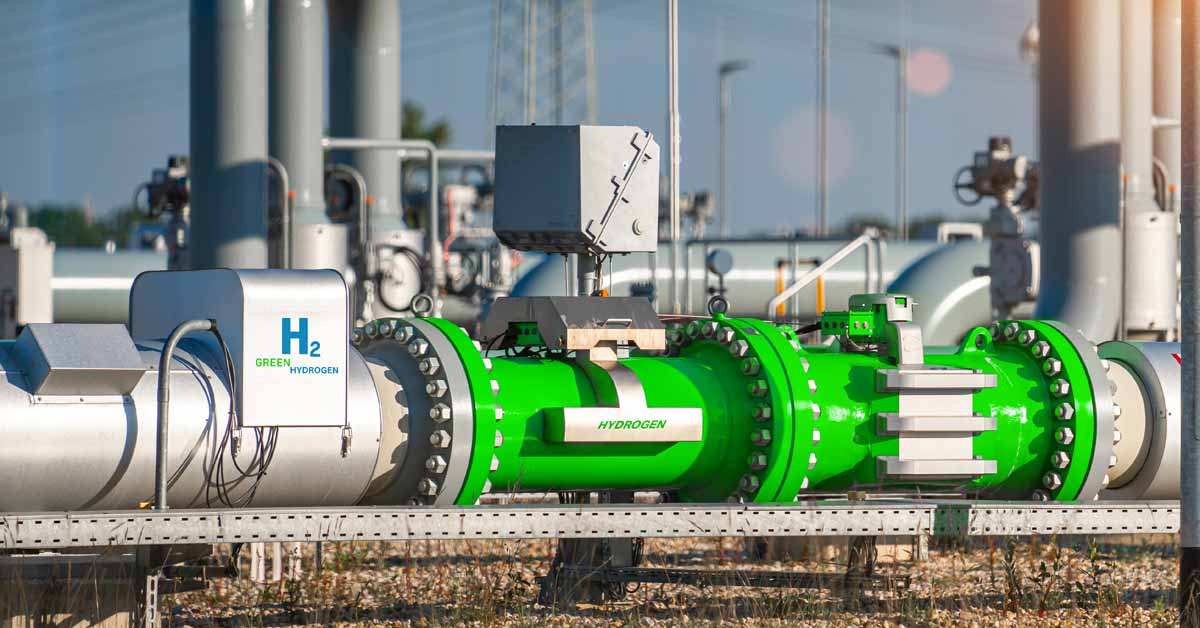
In the global effort to reduce emissions and mitigate climate change, the way we power our world is front and center. Nearly every sector is grappling with how to decarbonize while remaining competitive in our global economic system. While electrification plays a significant role, it’s fuel—especially liquid fuel—that is vital to our energy mix.
That’s where sustainable fuels come into focus.
As the climate clock ticks toward critical thresholds, the need for cleaner, more responsible energy solutions is immediate. The planet cannot afford to surpass the 1.5°C global temperature rise target without risking widespread ecological and economic fallout.
As the world works on mitigating solutions, terms like sustainable fuel, renewable fuel, and biofuel are often used interchangeably. Despite their similarities, they are not the same—and understanding the differences matters.
This post explores what makes fuel sustainable, how it differs from other clean fuel types, and why it holds such promise for our low-carbon future.
What Are Sustainable Fuels?
At their core, sustainable fuels are fuels derived from sources and processes that are designed to minimize environmental harm and support long-term ecological balance. It’s not just about where the fuel comes from, but how it’s produced, what emissions it generates across its lifecycle, and whether it can scale responsibly over time.
Why Sustainable Fuels Matter
Sustainable fuels are especially valuable in sectors where electrification is limited or unfeasible. Aviation, marine transport, and heavy industrial operations are some of the areas that will continue to rely on high-energy-density fuels for the foreseeable future. Sustainable fuels sectors like aviation to decarbonize without overhauling their entire infrastructure.
They also provide a flexible solution that can be integrated into existing fuel distribution systems, making them a practical near-term option for reducing emissions while renewable technologies mature.
What are Some Examples of Sustainable Fuels?
Sustainable fuels come in many forms. Common examples include:
- Hydrotreated Vegetable Oil (HVO): A drop-in diesel alternative produced from waste oils and fats.
- Sustainable Aviation Fuel (SAF): Derived from a variety of feedstocks, including used cooking oil and agricultural waste.
- Biomethane: Captured from organic waste like manure or landfills and upgraded to pipeline-quality gas.
- Electrofuels (e-fuels): Created using captured carbon dioxide and green hydrogen powered by renewable electricity.
The common thread across these fuels is their ability to reduce greenhouse gas emissions while avoiding excessive pressure on ecosystems or food systems.
What Fossil Fuels are Sustainable?
In short, no fossil fuel is sustainable. For one, fossil fuels are often derived from a finite resource of carbon-heavy crude oil and coal. This means that if we proceeded with these fuels as normal, eventually these resources would become more difficult to acquire. Ultimately, this would make their harvesting even more resource-intensive and carbon-heavy beyond their own usage.
Secondly, energy sources like crude oil are high carbon stores. This means that both the extraction and usage of these fuels produces a high carbon output.
Despite better and more efficient technology and some promising CO2 conservation improvements, fossil fuels cannot carry on sustainably. This is why the transition to sustainable and renewable fuels is so fundamental to our future.
What is the Difference Between Renewable and Sustainable Fuel?
It’s easy to conflate sustainable fuels with renewable fuels or even biofuels. After all, they all aim to displace fossil fuels and reduce carbon footprints. But there are important distinctions that can shape energy policy, investment decisions, and environmental outcomes.
What Are Renewable Fuels?
Renewable fuels are defined by their origin. They’re produced from resources that naturally regenerate—like crops, wind, or sunlight. In the context of liquid fuels, this often means biofuels derived from corn, sugarcane, or vegetable oils.
While renewable fuels are a critical component of the clean energy transition, the term doesn’t account for how these fuels are produced. For instance, corn-based ethanol is renewable, but the intensive land use, water consumption, and fertilizer runoff associated with its cultivation raise sustainability concerns.
What Makes Fuel Sustainable?
Sustainable fuels go a step further. They not only come from renewable or low environmental impact sources, but they also meet broader environmental and ethical criteria:
- Lifecycle Emissions: Are emissions lower from production to use?
- Land Use and Biodiversity: Does the fuel’s production protect forests and ecosystems?
- Food System Impact: Does it compete with food crops?
- Waste Utilization: Does it upcycle existing waste streams?
Sustainable fuel might be produced from waste oils, agricultural residues, or even carbon captured from the atmosphere. These resources don’t require new land or fresh water to be used in order to produce them.
Key Differences Between Renewable and Sustainable Fuel
|
Renewable Fuels |
Sustainable Fuels |
|
|
Focus |
Resource origin |
Lifecycle impact and long-term viability |
|
Examples |
Corn ethanol, palm biodiesel |
Used cooking oil diesel, SAF, biomethane |
|
Food system pressure |
Often competes with food crops |
Typically uses waste or non-food materials |
|
Emissions perspective |
May reduce emissions |
Prioritizes significant lifecycle GHG reductions |
|
Ecosystem impact |
Varies |
Minimizes land-use and deforestation risks |
Sustainable Fuels: Powering a Long-Term Future
Sustainable fuels represent one of the most adaptable and impactful options in our decarbonization toolkit. As industries seek practical ways to lower emissions without sacrificing performance or reliability, these fuels offer a clear path forward. This holds especially true when paired with circular resource use and rigorous sustainability standards.
While the lines between sustainable, renewable, and bio-based fuels can sometimes blur, the distinctions matter. As we move deeper into an era of climate accountability, it’s not enough to simply use less carbon. We must also consider how we extract, process, and scale our energy sources responsibly.
By prioritizing sustainable fuels, we choose not just cleaner energy, but smarter energy. Our path to preventing climate disaster rests on humanity’s ingenuity in developing, deploying, and integrating sustainable energy solutions. We can achieve this through global cooperation toward an essential human goal: keeping our energy usage sustainable for generations to come.
Register for On-Demand Webinar & Get Exclusive Insights on the Biofuels Market
Learn all about where renewable fuels are headed next in a live session with ResourceWise’s Mat Stone. This webinar explores the shifting short-, medium-, and long-term outlooks that are defining the future of the industry.
From real-time price fluctuations to forward-looking investment trends, you’ll come away with a clearer view of the risks—and opportunities—emerging in today’s biofuels landscape.
Topics we cover include:
-
The latest on policy developments like 45Z and their potential to reshape market dynamics
-
How tariffs and international trade are influencing feedstock supply and fuel movement
-
Addressing fraud risks in biofuels and how industry efforts are safeguarding credibility
-
New avenues for carbon sequestration at pulp mills and the use of biogenic CO₂
-
Updates on the rollout and potential of SAF, marine biofuels, and next-gen feedstocks
Register now to gain the insights you need to stay competitive in a rapidly evolving space.






